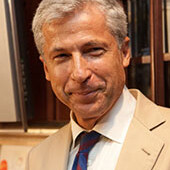The world, and this includes most people in Pakistan, knows little of Baluchistan (also spelled Balochistan), a stark province of desert, forests and mountains. Roughly the size of Montana, it is rich in minerals, especially natural gas. It lies directly below Afghanistan and borders the Arabian Sea. Alexander the Great lost the largest part of his army here on his trip back home. The desert and lack of water took their toll.
There are seven million people in Baluchistan, nearly half of whom are Pashtuns, who live on both sides of the Afghan-Pakistani border. The other half is mostly Baluch, many of whom live in Afghanistan and Iran.
[Click here for a map of the Afghanistan/Pakistan border regions.]
Baluchistan is a tribal culture, a land of baked-mud compounds, mountain fortresses, and nomads. It is here that Pakistan conducts its underground nuclear bomb tests and launches its missiles. Today, with Chinese labor and financial support, it is building a modern port at Gawdor, near Iran and the entrance to the Persian Gulf. Until 1958, Gawdor belonged to the Sultan of Oman. There are said to be small U.S. military bases here, near the Iranian border.
As a young newspaper reporter in the 1980s, disguised as an Afghan, I flew from Peshawar, the capital of Pakistan's Northwest Frontier Province, to Quetta, the capital of Baluchistan. A taxi driver, with the windows rolled down and a Johnny Cash tape playing loudly, took me to a single-story hotel, the only accommodation for foreigners in the city. I walked the quiet streets and drank tea and ate pilaf in small one-room restaurants, heated with wood burning stones, with quiet men in thick, dark turbans.
Today, Quetta is a much larger city and foreigners are watched carefully. U.S. and NATO leaders and Afghan officials claim that Mullah Mohammed Omar, head of the Taliban, is living in Quetta. Some Afghans say that Omar is in Oruzgan Province in Afghanistan, above Kandahar, where he is protected of his tribe. I doubt it. There are too many foreign soldiers here.
In the 1980s, there were thousands of Afghan refugees in Baluchistan, as there are today. In the streets there were polite, smiling young men who fought in Afghanistan under their tribal leaders, as today there are ardent young men in black turbans, members of the Taliban, living openly. They too fight under their tribe.
A few days after I arrived in the early 1980s, on an icy cold pre-dawn December morning, I left my hotel, walked down empty streets and alleyways, met my contact and rode on the back of a motorcycle on a bumpy sandy path, into Afghanistan and headed towards a Mujahideen encampment near Kandahar. I had no idea when I left Pakistan or when I entered Afghanistan, a situation unchanged for any traveler today.
There was then and is today only one narrow paved road leading from all of Baluchistan to Afghanistan, one formal border crossing. When I returned to Pakistan, via a different route, I came by camel, across a desert that looked like the Sahara.
The border between Afghanistan and Pakistan, called dismissively the Durand Line in Afghanistan, and "the border" in Pakistan, stretches from Chitral, in the Himalayan foothills of Pakistan's Northwest Frontier Province south and west to the Iranian border, 1,510 miles away.
In 1949, the Grand National Assembly, or Loya Jirga, a meeting of all Afghan tribal leaders, rejected the Durand Line, drawn in the 19th century by British India. Afghanistan once controlled much of what is today the Northwest Frontier Province and Baluchistan.
In the 1980s, the Mujahideen were fighting the Soviet Union. In order to put greater pressure on Pakistan and to stem the flow of arms coming in from Baluchistan (as they come in today to help the Taliban) the USSR promised Baluchistan independence if it backed the Soviet Union. It was not the first to make this promise.
In 1947, when the British Raj ended and Pakistan was carved out of India as a home for South Asian Muslims, Baluchistan announced its independence. In 1948, the Pakistani army entered Baluchistan to ensure that it joined Pakistan. For decades, Punjabis, who make up the largest ethnic group in Pakistan and who control its bureaucracy, have controlled Baluchistan.
In August 2006, the Pakistani army, which is largely Punjabi, killed the popular Oxford-educated Pakistani politician and Baluch tribal leader, Nawab Bugti, reputed to be the head of the Baluch Liberation Army. General Musharraf called his death a "great victory."
The Pakistani army is trying to establish government control over all of Pakistan, particularly in its restive tribal regions along the Afghan border. It wants to assure that the Durand Line is the border. It is concerned about Iranian involvement in Baluchistan.
It is frightened, above all, of India. In 1971, Pakistan lost half its population when East Pakistan, treated poorly by the Punjabi majority of West Pakistan, seceded from Pakistan and became Bangladesh, in a war in which millions died. India interceded in the end on behalf of the Bengalis.
Pakistan today claims, with justification, that India is fostering unrest in Baluchistan. India has trained Baluch guerrilla fighters in India. Pakistan believes that Indian spies, based in Afghanistan's Indian consulates in Kandahar and Jalalabad, on Pakistan's borders, are causing unrest in Pakistan. In turn, according to many authoritative accounts, Pakistan is using the Taliban, who are Pashtuns based in the Northwest Frontier Province and in Baluchistan, to undermine the Karzai government of Afghanistan and to prevent them being surrounded by India.
The war will continue, and many more Afghans and Pakistanis, particularly innocent Pashtuns and Baluch, will die until the border disputes are resolved and people learn to live within them, and to curb their ambition to control or conquer their neighbors.



